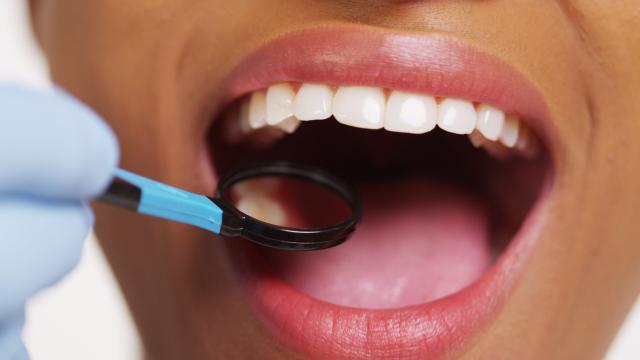As children, one of the first things we learn about oral health is that if we eat too much candy and/or don’t brush our teeth, we’ll develop holes in our teeth called “cavities” which will then have to be filled in, and a drill is a part of that process. While not completely off, dental hygiene is a little more nuanced than that — including the fact that in some cases, cavities can actually be reversed. Here’s what to know about that and a few reminders of how to avoid those tooth holes in the first place.
[referenced id=”937611″ url=”” thumb=”” title=”” excerpt=””]
How to reverse cavities
Assuming you have a basic knowledge of cavities and teeth, let’s dive right in. (If you don’t, here’s some background information from the American Dental Association (ADA).) Cavities come in different sizes and degrees of severity. They develop through five stages of tooth decay — with the first being a tooth’s exposure to acids from bacteria caused by eating sugar and starch, and the last stage being a full-blown abscess, with pain and pus and everything.
To reverse a cavity, you’re going to need to catch it in its first stage by looking for white spots on your teeth. This discoloration can appear on a tooth where it has experienced mineral loss, which is an early sign of decay, according to the National Institute of Dental and Craniofacial Research (NIDCR). Think of it as a warning sign of a cavity, which may form if additional minerals from the tooth are lost, and its enamel weakens over time.
The key here is doing what you can to help your enamel repair itself. The main way that happens is using minerals from your own saliva. The catch is that in order for your saliva to be useful here, it can’t be sitting around in your mouth after you’ve eaten (especially sugary and starchy foods). So if you notice one of those white spots, be extra careful about what you eat and when, and make an extra effort to brush your teeth after meals and snacks.
How to prevent cavities
None of this should be new, but just in case you need a refresher, here’s what the ADA recommends you do to prevent cavities from forming:
- Drink water with fluoride
- Brush with fluoride toothpaste 2 times a day
- Stay away from sugary foods and drinks, like candies and soda. Don’t sip or eat on them all day. If you are going to eat or drink things that are sweet do so at meal times.
- Limit sweet snacks between meals
- Clean between your teeth daily
- Visit your dentist regularly
This is especially important now, during a pandemic, when you probably want to spend as little time in the dentist’s chair as possible.

Leave a Reply
You must be logged in to post a comment.